| Philodina roseola; whirling; ventral view. Although this species is often found together with the green algae Haematococcus pluvialis (the mature aplanospores of this algae are bright red) and P. roseola has a bright red or orange stomach, this critter seems not to feed on this alga, but on other unicellular green algae such as Oocystis sp.. Philodina roseola may be easily confused with Abrochtha intermedia, because of similar apearance (also red stomach, orange cerebral eyespots, acute spurs). (3) |
| |
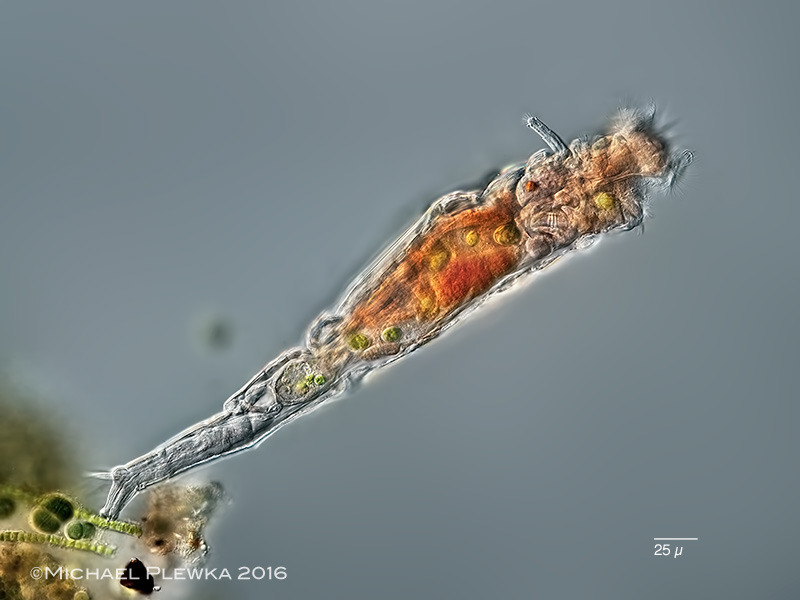 |
| Philodina roseola; whirling; lateral view. Image shows the critter while engulfing a green alga. Although this species has a red stomach, the diet of this critter is green algae ( like Oocystis sp.) or cyanobacteria (like Croococcus sp. and Nostoc linckia). (5) |
| |
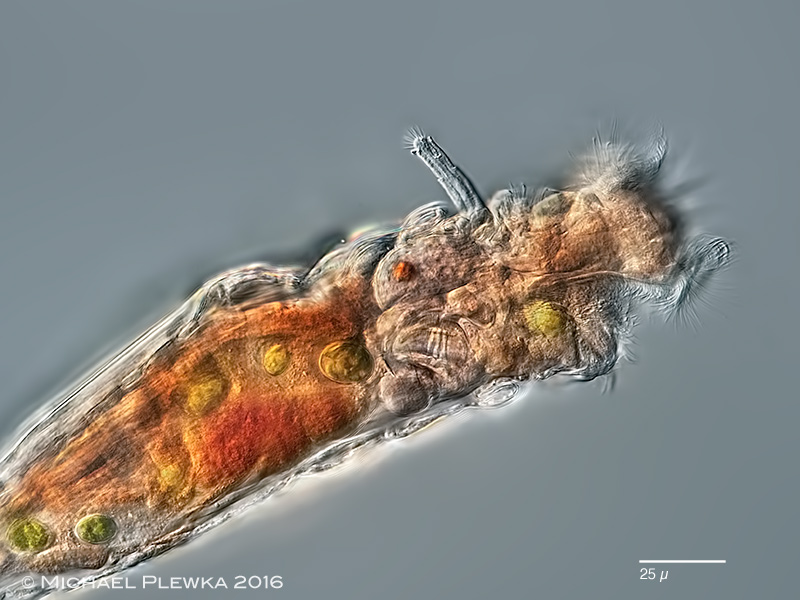 |
| Philodina roseola; crop of the above image showing several green algae in the stomach lumen. (5) |
| |
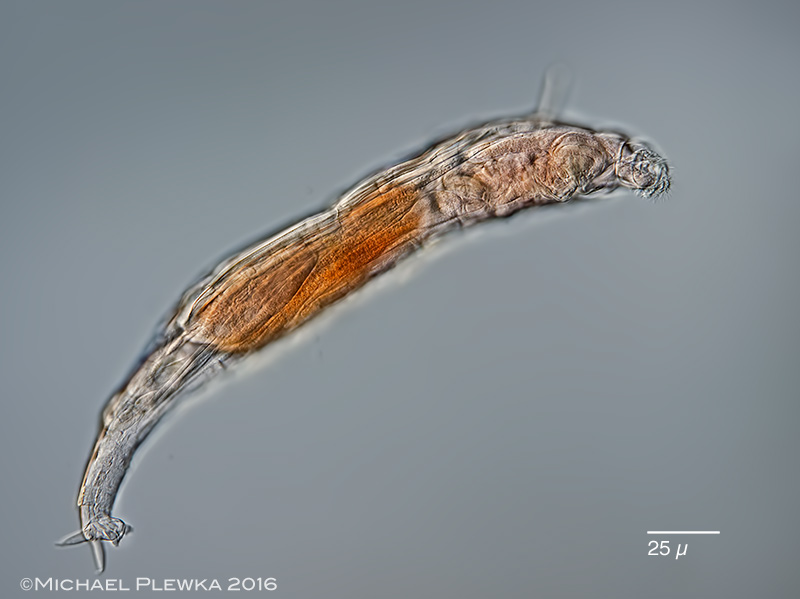 |
| Philodina roseola; specimen with retracted corona, creeping, lateral view.(4) |
| |
 |
| Philodina roseola; head of whirling specimen, dorsal view; focus plane on the upper lip. (5) |
| |
|
|
| Philodina roseola; ventral view of the anterior part of a creeping specimen. The right image may show the opening of the ducts of the retrocerebral organ through which the attachment of the rostrum while creeping is enabled. |
| |
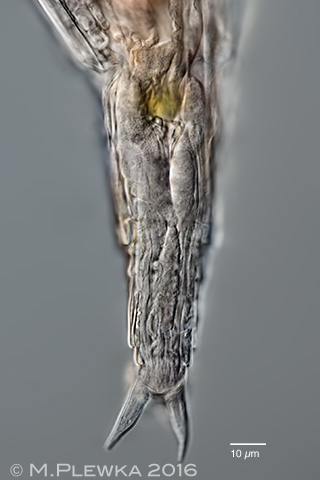 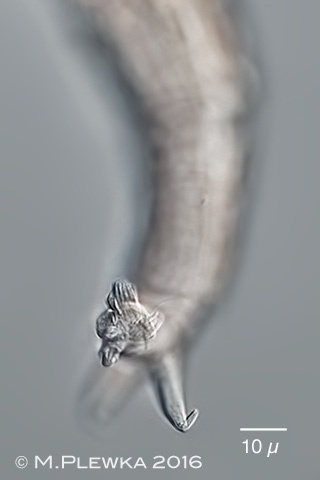 |
| Philodina roseola; two aspects of the foot (specimen from (3). Left: dorsal view of acute spurs with interspace; right: ventral view on the 4 toes and one of the easily bendable spurs. |
| |
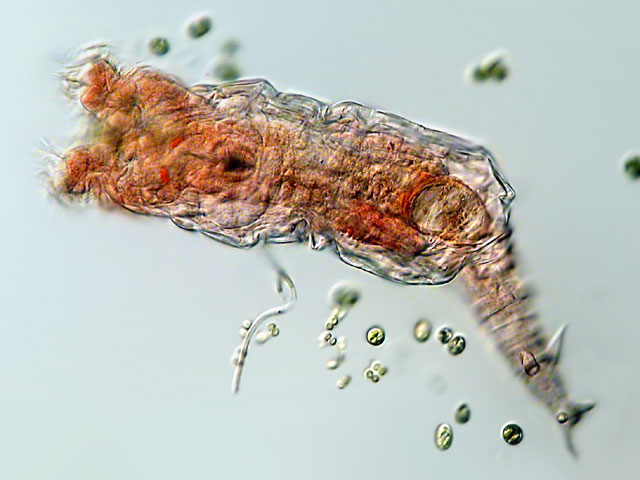 |
| Philodina roseola; whirling; focus plane on the foot with spurs and the long dorsal oriented toes. Also visible are the two oblong eyespots. (2) |
| |
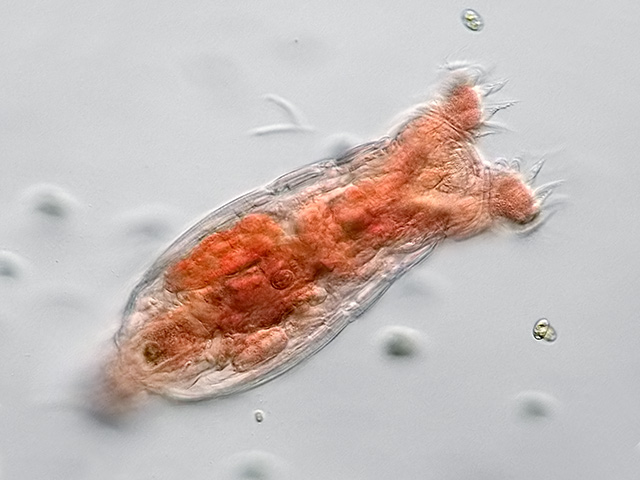 |
| Philodina roseola; another specimen from the same sample (2) |
| |
| |
 |
| Philodina roseola; the water current which is caused by the cilia is visible by means of the green algae and detritus.(2) |
| |
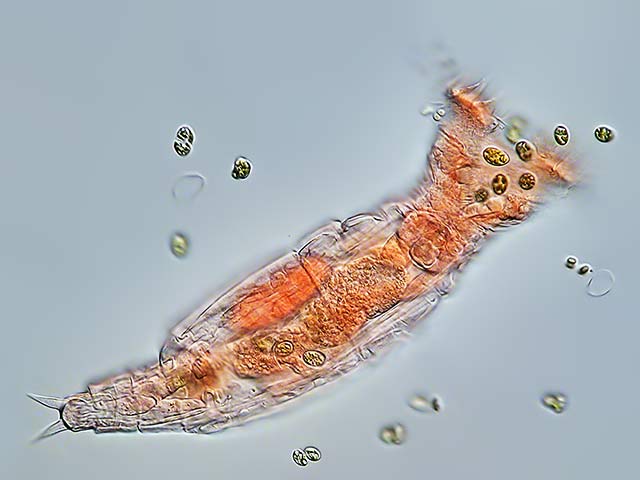 |
| Philodina roseola; whirling. (2) |
| |
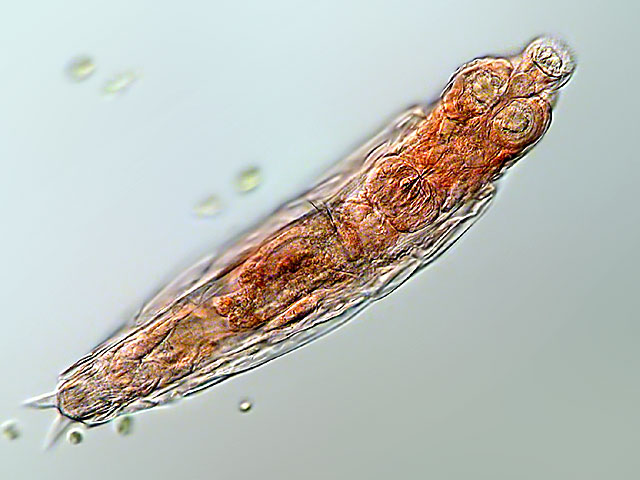 |
| Philodina roseola, creeping. (2) |
| |
|
|
| Philodina roseola; left: focus plane on the spurs (crop of the above image). Right: focus plane on the 4 toes (arrowheads)(2) |
| |
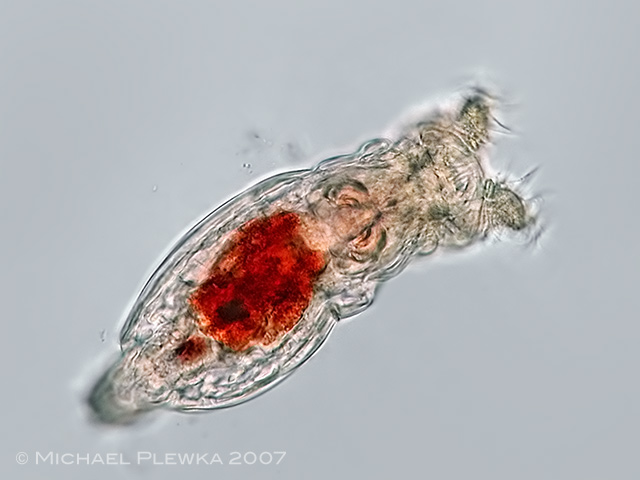 |
| Philodina roseola; specimen from (1) |
| |
 |
| Philodina roseola; crop (1) |
| |
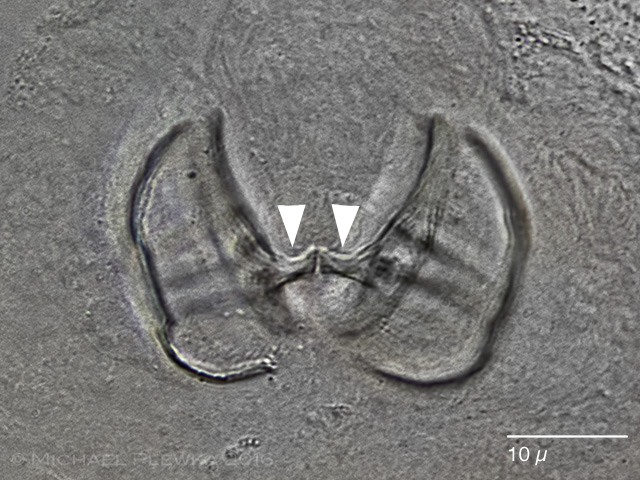 |
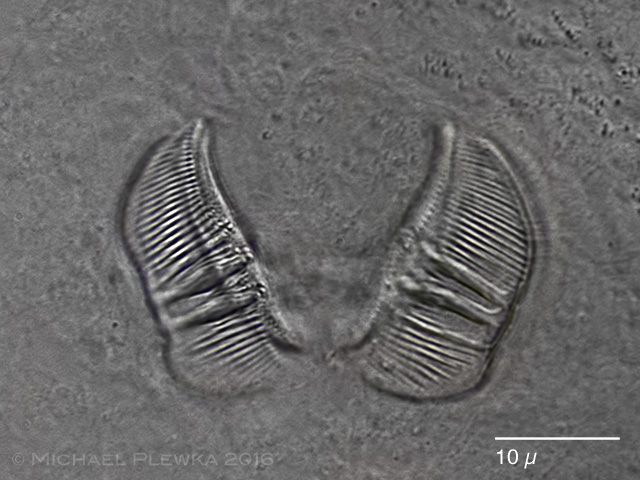 |
Philodina roseola; two aspects of the trophi; different focus planes. Upper image: caudal view. Like in Philodina citrina each ramus bears a conspicuous projection called ramus apophysis, a detail which apparently has been overlooked by some rotiferologists and can only be observed by carefully focusing on the caudal side of the trophi (arrowheads).
Lower image: cephalic view. Dental formula 2+1/1+2;; rami length (RaL): 20µm. |
|
| >>> Measurements |
| |
| |
| |
| Location: Gevelsberg, Grünes Klassenzimmer, pond (1); Sprockhövel, Germany Paastr., granite-bird bath (2); Hagen, Germany, garden, bird bath made from sand stone; together with Abrochtha intermedia. (3); (4); (5) |
| Habitat: Detritus (1); detritus (2). This species seems to occur preferably in ephemeral pools. |
| Date: 23.07.2007 (1) 24.8.2008 (2); 23.07.2007 (2); 14.02.2016 (3); 15.02.2016 (4); 26.02.2016 (5) |
|
|